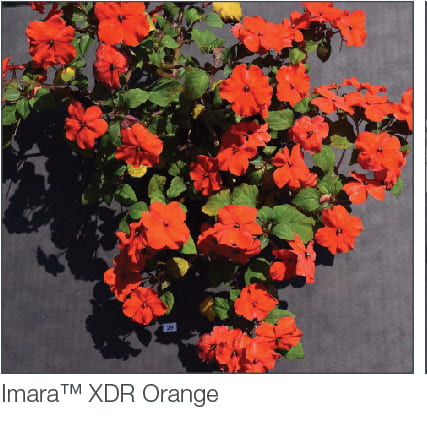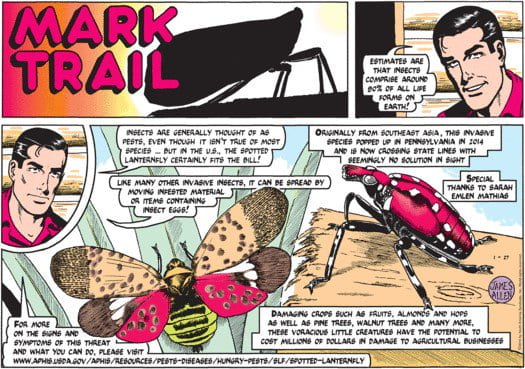Author: cmanneri
Storm Damage – Pruning Trees Safely
Recent storms have caused damage to trees, landscapes, and homes across the country. Many trees are too large for homeowners to safely remove. With over 50 fatalities yearly nationwide for professionals removing or pruning trees, the rate is much higher for people not trained in specialized tree work. Proper tools and equipment, as well as safety procedures, must be used.
Pruning initiates wound response by trees (compartmentalization), isolating microorganisms and insects to avoid further damage. Remove broken or damaged limbs, but not more than one-third of the branching system of any tree. If more than one-third of branches have been damaged, remove the tree. Cut limbs back to a lateral branch collar swelling, do not leave a stub. Do not paint or seal wounds, which should be allowed to heal naturally.

A fact sheet from Oklahoma State has more information: http://factsheets.okstate.edu/documents/epp-7323-managing-storm-damaged-trees/?fbclid=IwAR2Tz9N_LUO3ODoJnHk6VZEA1c-cqFkzqkiz2JXH8bU7smKVBtLXJINe9BA
NFG 5/31/2019
Fungi That Grow in Mulch
Landscape mulch usually consists of hardwood shreds or bark chips, providing cover to hold moisture and add a finished look. Wood in mulch also provides a food source for fungi that are natural decomposers, breaking down plant material and utilizing organic matter. Without fungi, dead leaves, twigs and branches would clutter forests and landscapes. We see fungal fruiting bodies after growth of threadlike mycelium in soil and mulch. The most recognizable of these spore producing bodies are mushrooms, but sometimes they produce other structures, such as slime molds, stink horns, bird's nest fungi, and artillery fungus.

Most of these are harmless, providing decay of excess organic matter. Addition of fresh mulch yearly and raking to break up surface growth can prevent these fungi from sporulating. Artillery fungus can leave unsightly spots from spores deposited on siding, walls and cars. Use of pine bark or nuggets rather than hardwood reduces growth of artillery fungus.
NFG 4/2019
Oak Wilt Fact Sheet
What Do Extension People Do?
Life of Extension - These interviews highlight some careers in Extension. Cooperative Extension “extends” research and university information to agricultural communities. This info may help students initiate career conversations with advisors, mentors, and colleagues. Check out Kevin Ong and Raj Singh, plant disease diagnosticians! https://www.apsnet.org/careers/ProfessionalDevelopmentCenter/LAUNCHCAREER/Pages/LifeofExtension.aspx
NFG 2/21/2019
Pest Management for High Tunnels
Ipm for high tunnels and greenhouse sites going into Spring, based on a good article from University of Kentucky Extension:
- Start clean and stay clean.
- Sanitation and weed control in and around structures, repair screening for insect pests.
- Regular monitoring and visual inspection of plants and sticky cards. Know crop history and pests encountered, and keep records
- Detect pest problems early, while at manageable levels. Identify pests and for aphids and whiteflies identify them to species. County Extension offices and Plant Clinics can help with this.
- Release beneficial species (natural enemies and pollinators), from reputable suppliers. Monitor populations because beneficial species require management.
NFG 2/19/2019
Impatiens Downy Mildew Resistance Available!
PanAmerican Seed announced a series of I. walleriana with resistance to Impatiens downy mildew. Beacon Impatiens, according to a press release, offer season-long performance and color to the shade without the disease risk. "... we are confident that our greenhouse customers, retailers and gardeners alike will have the confidence to grow garden Impatiens once more.” “With a plant structure, flowering time and flower size that is similar to existing Impatiens, ... There’s no special plant culture required for Beacon to be successful. Beacon Impatiens will have its debut at shows in 2019, with six core colors and two mixes in the series. A limited supply is available, with greater availability in 2020.

Syngenta Seed also has a release of resistant impatiens, the Imara TM series: https://www.syngentaflowers-us.com/campaign/imara-XDR-impatiens . Impatiens walleriana with a high degree of resistance to downy mildew.* Proven landscape performance with reliable flowering all season long. Easy and economical, ideal for growing in packs and pots. ‘Welcome Back!’ to a favorite shade bedding plant.
NFG 2/6/19
Getting the Word Out #spottedlanternfly
Increase awareness and knowledge with something that catches your eye!

NFG, 1/29/19
Spotted Lanternfly Webinars Feb and March
Jan 22, 2019, N F Gregory - The Northeastern IPM Center will host a collection of webinars, titled "Spotted Lanternfly Basics." Each webinar will be tailored to a specific commodity group:
- Spotted Lanternfly Basics - Hops, Berry, Vegetable Growers (Feb. 26, 2019, 10:00 a.m.)
- Spotted Lanternfly Basics - Grape and Apple Industries (Feb. 26, 2019, 1:00 p.m.)
- Spotted Lanternfly Basics - Christmas Tree Growers (Mar. 4, 2019, 10:00 a.m.)
- Spotted Lanternfly Basics - Nursery, Greenhouse, Landscape (Mar. 4, 2019, 1:00 p.m.)

All webinars will follow a similar format that covers spotted lanternfly biology, identification, and hosts, monitoring and management strategies, and a regulatory update. While the content may be relevant to audiences throughout the Northeast, management practices covered will be specific to New York. Participants will be encouraged to ask questions. For more information and registration links, go to: http://neipmc.org/go/mYey
Carrying Plant Products over the Holiday?
Washington, D.C., December 18, 2018 – The United States Department of Agriculture (USDA) Animal and Plant Health Inspection Service announced that the North Pole was checking out its new USDA traveler information web page. The web page provides important information about which agricultural items may enter the United States – and which ones are best left behind. This helps to protect the health of our country’s plants, animals and natural resources. “... We are thrilled to hear directly from Santa’s elves that the big man himself was comparing his gift list to our requirements,” said U.S. Secretary of Agriculture Sonny Perdue. “We thank Santa for setting a great example. We know he always gets a permit for his reindeer to enter the U.S., but this year he’s going above and beyond to help protect our farmers, ranchers and citizens.”
Food and other items (plants, seeds, wood, fiber or straw) from other countries can carry pests and diseases not found in the United States. Certain items are not allowed to be carried in by travelers, but some items may be allowed with specific documentation. USDA’s new site helps everyone know what is okay to bring in to the U.S. : https://www.aphis.usda.gov/travel

